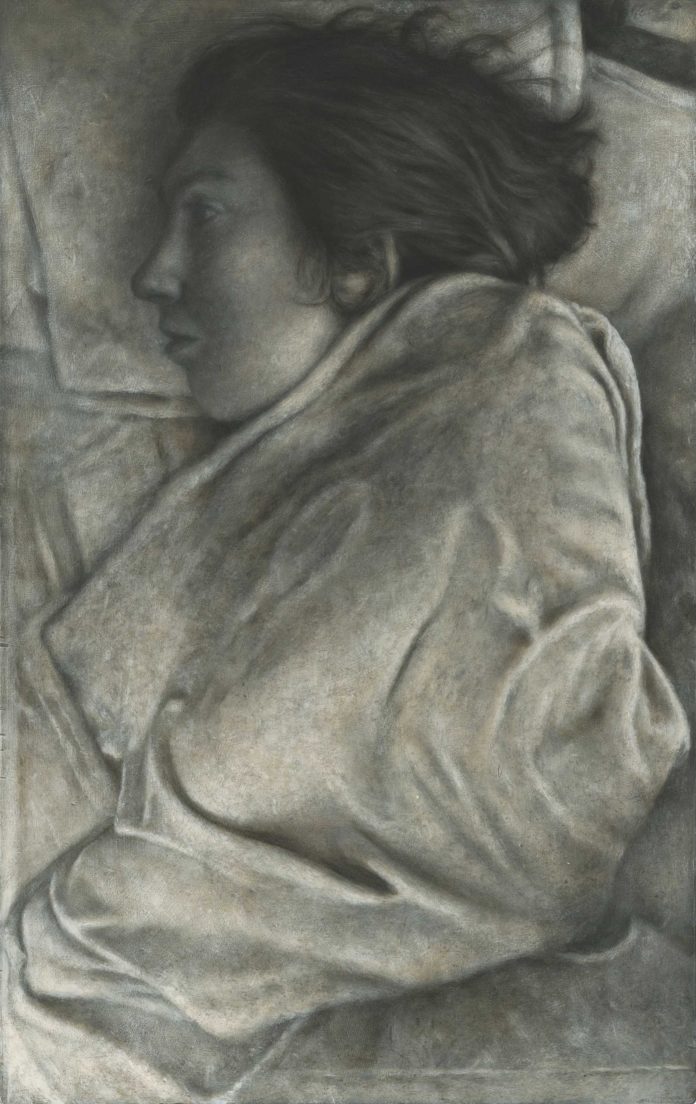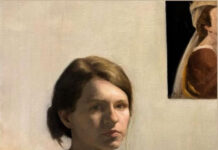Contemporary artist Tim Lowly shares how the Korean Minjung art movement and his special needs daughter, who is “profoundly other,” inspire his acrylic portraits.
Acrylic Portraits: Painting My Daughter Temma
BY TIM LOWLY
Making This Painting: “Coroação”
A little background. I grew up in South Korea as the child of medical missionaries. Perhaps the most salient point from that time, in light of my eventual development as an artist, was my exposure to a Korean art movement — the Minjung movement — that put as its central subject those who are on the margins of culture, the Minjung: the politically, socially, and materially dispossessed.
At the time when I was heading into the practice of being an artist, “political” art was a popular thing in the United States, but I found much of that work to be grandiosely polemical. By contrast, in some of the Minjung artists’ work I found a more convincing and grounded commitment. As a young artist I was interested in a number of things, but centrally I increasingly wanted to make art that was aiming to do something related to the Minjung. Little did I know what was in store for myself and my wife when our daughter Temma tumbled into our lives.
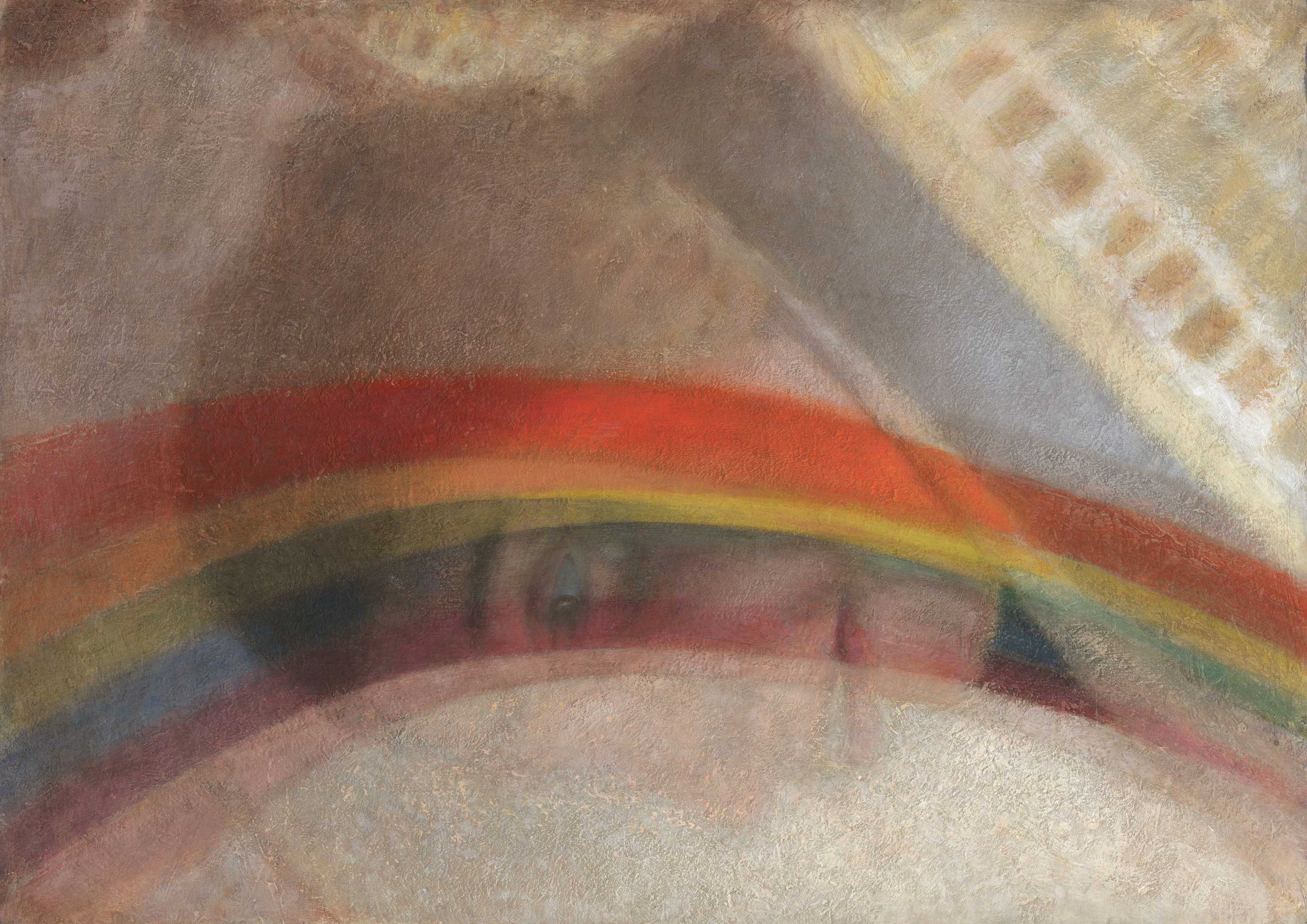
Finding and Regarding the Subject
Yes, increasingly over my career the most frequent subject of my art has been my daughter Temma. Much has been written about Temma*, so I will say simply here: Temma had a cardiac arrest shortly after birth and the ensuing brain damage apparently left her with little ability to remember or learn or recognize or carry out most of the intellectual tasks that most of us take for granted. That said, my work is not particularly thinking of Temma as one who is “disabled” or to be pitied, but as someone who is profoundly “other.” I find myself in the company of a person who has me constantly re-thinking pretty much everything, including what art might be up to.
*Read “Temma Lowly and the Meaning of Life” by Fred Camper, Chicago Reader
Each Day Is Composed of 86,400 Seconds
I take many photographs, and the most frequent subject of my photography is Temma. To be clear, Temma does not pose; most likely she has no idea of what photography is, let alone that she might be the subject of a camera. Perhaps that has influenced my practice of frequently taking photographs of her that involve considerable spontaneity or chance.
Such was the case one day, years ago when, as Temma was lying in bed, I took several photographs of her in a rather playful fashion. I was playing with double / triple exposures through the rather primitive technique of using a long exposure, pointing the camera at one subject (Temma), covering the lens with my hand and moving to another part of the room and uncovering the lens to capture another subject (in this case a rainbow decal on the wall of her bedroom). None of the resulting photos could really be called “composed.” Later one of the photos struck me as particularly interesting and I decided to work with it in Photoshop.
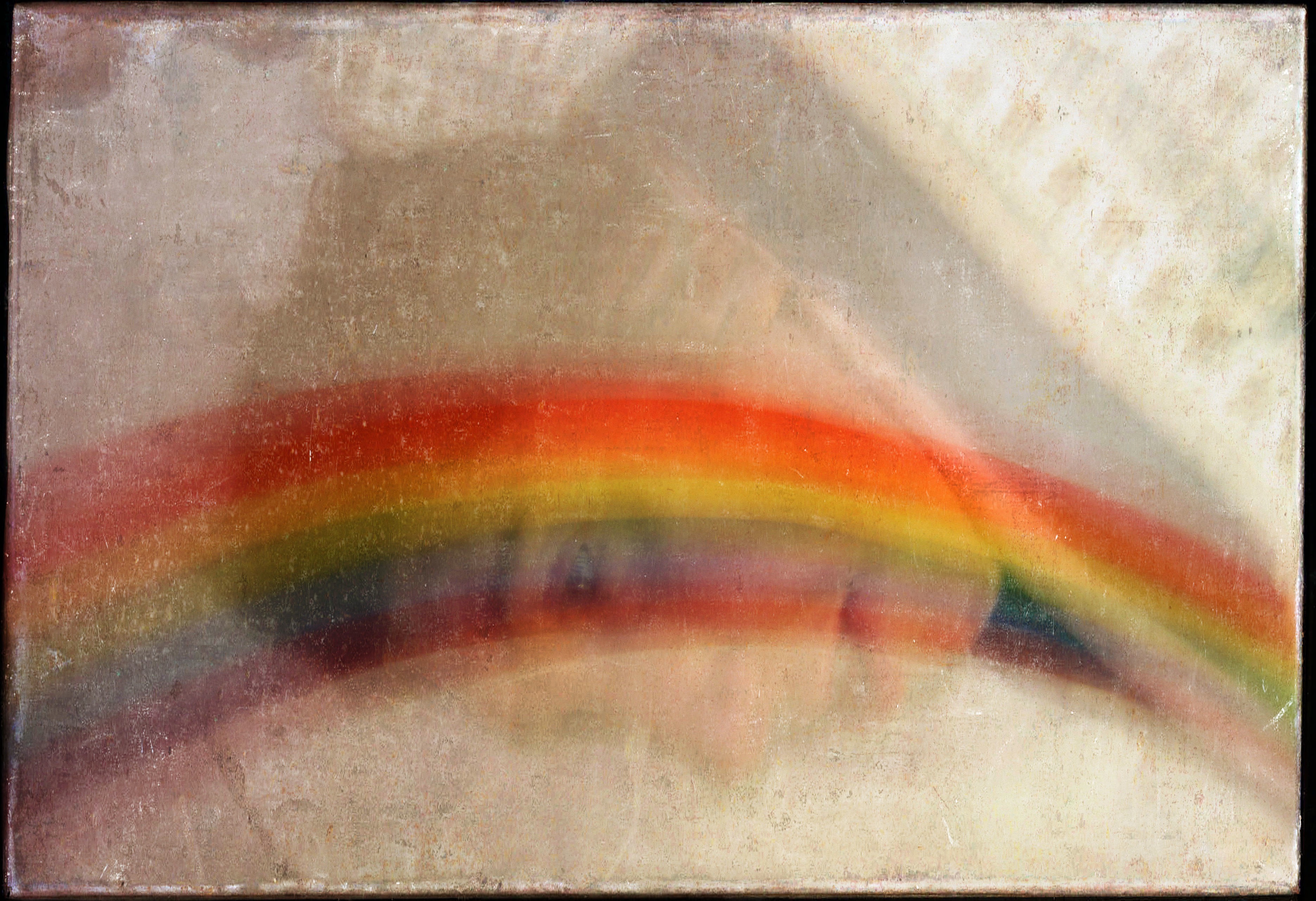
Un-photographing the Photograph
Over the last twenty-plus years I have employed Photoshop in a practice where I layer various textures (that I have scanned or photographed) over a primary photograph. The process is usually fairly involved, and the resulting images end up looking more like painting or something more organically produced than a photograph.
One thing this process does for me is it inserts a kind of subjectivity and seeming materiality into the image, complicating its nature as an image. I’ve posted thousands of such processed photos (which I call “photoworks”) on Flickr, including the one reproduced here, the one that I eventually used as the source for the painting “Coroação.”
Make Connections
Several years after I made the above-mentioned source image, I started a painting project, which I eventually titled “Re. Rainbow Girl.” The idea of this project was to make a series of paintings of Temma that had some sort of relation to (generally) well-known European painting of the 17th to 19th centuries. As such, in preparation for the project I was looking through the many photoworks that I’d made, selecting images that had that kind of connection.
The photowork that I ended up using for this painting reminded me of a painting that I had seen and photographed in Lisbon, Portugal, titled “Coroação da Virgem (Coronation of the Virgin”), by the Portuguese painter Domingos Antonio de Sequeira (1768–1837). The primary connecting element for me was the rainbow that “crowns” the occasion in de Sequeira’s painting. The title of that painting further nods to the popular Coroação de Nossa Senhora (Coronation of Our Lady) ceremony, an event that seems to celebrate the participating girls’ innocence: connecting them — in that regard — to Mary. While Temma is quite different than Mary, she does seem to move through life in a state of perpetual innocence.
With those ideas in mind, I prepared a panel for the painting, one that like all the paintings in this project is quite intentionally intimate in scale.
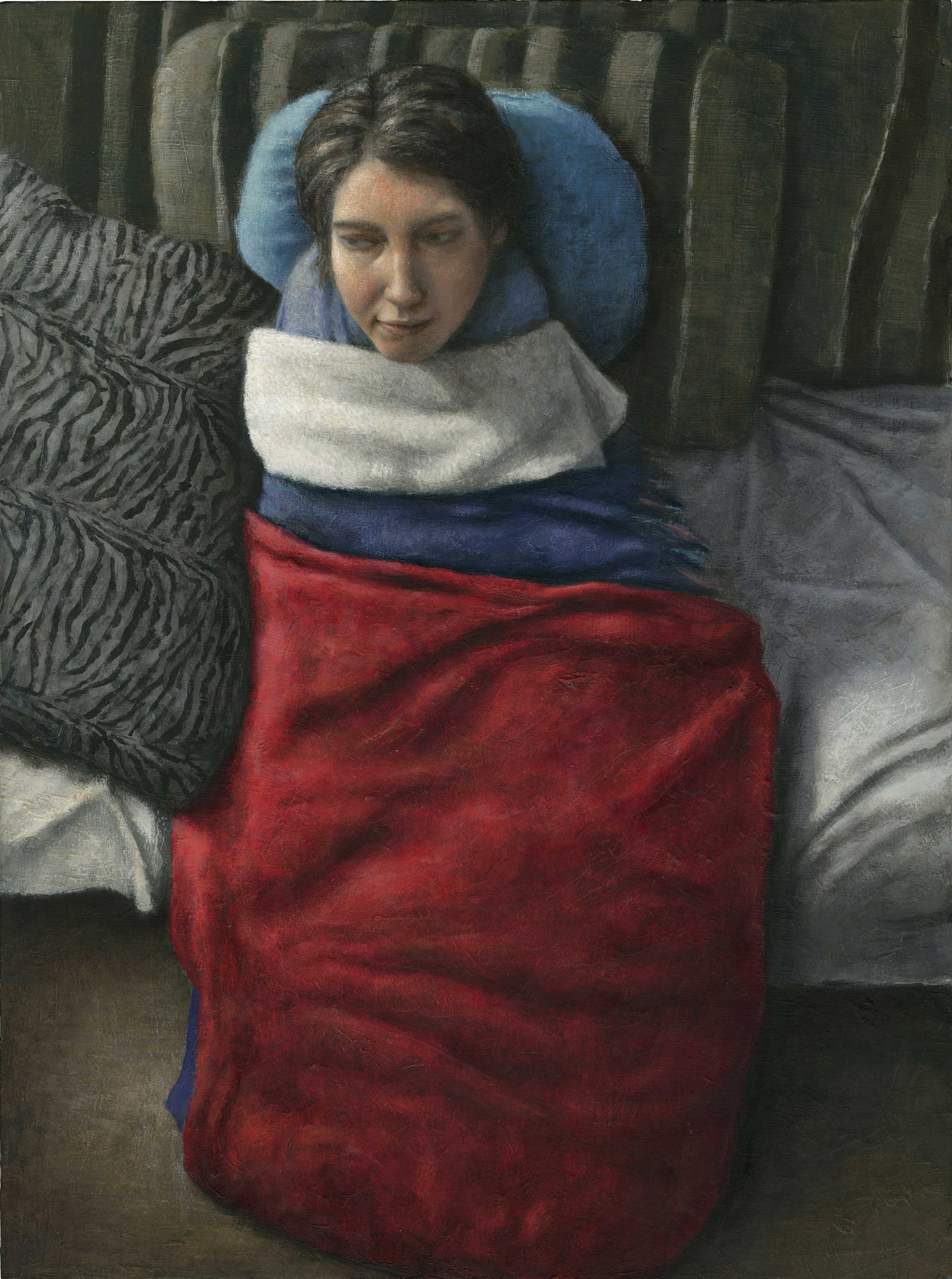
Unfolding in Community
Not long after deciding to make this painting — and doing some initial work on it — I led a week-long painting workshop. I invited the participants in the workshop to each bring whatever materials they needed to make one of their paintings. The workshop proceeded with each participant introducing their particular approach to painting, their specific painting’s concept, and then teaching the other participants how to make their painting.
As the workshop proceeded, the participants worked on each other’s paintings, attempting to be true to the original artist’s intentions. The painting of mine that I involved the workshop participants in working on was this painting. The results of those corporate labors during the workshop constituted but a scant portion of “Coroação’s” ultimate production, but the experience was none the less significant.
Painting with Egg Tempera
My paintings generally involve many layers of paint, much of which employs a dry brush technique. I came to this way of working in no small part by working with egg tempera for about ten years. Painting with tempera entails an application that is akin to a caress. That is, the paint is applied in small strokes that dry to the touch fairly quickly enabling a relatively rapid build-up of layers.
That said, while tempera dries fairly quickly, it remains vulnerable to remoistening for a fairly long time (at least a day, sometimes a week). As such, subsequent layers can be added immediately, but with a touch that is necessarily quite delicate. A more aggressive brushwork will most likely lift all the layers underneath. Switching to matte acrylic removed that risk, but I still use a similar kind of application towards a many-layered surface. As such, the technique is rather labor intensive: in some ways it is more analogous to tending a confounding garden than constructing something through steps 1, 2, 3. In that regard, while the source image for this painting has the sense of things layered (specifically the rainbow that appears to be in front of the face) the painting of the image with my approach is probably quite different than one that an oil painter might use.
Painting Towards Skin
Many years ago, in reading a book on the artist Marc Chagall, I picked up an idea that he conveyed, of “painting towards skin.” I’ve come to think that in making a painting one might work towards a kind of complex, dense, “woven” surface that has an analogous — perhaps phenomenological — relationship to the incredibly charged surface of our bodies. That is, when one is making a painting, one might not be simply rendering an image, but additionally making a thing with a surface that (potentially) has a charged relationship to embodiment / existence. I suspect that this is at the root of my tendency to make paintings that are many layered, woven dry-brushed complexes with little regard to efficiency.
Wandering into Mystery
Returning home from the previously mentioned workshop, I continued working on the painting. That labor proved to be much longer than I might have expected. This was true with most of the paintings in the “Re. Rainbow Girl” project. For one thing, while the paintings were conceived as an exhibition, there was no pressing deadline to complete them. But further, I simply decided to keep working on them until they were what they needed to be. And at any one point I had two or more paintings from the project going at the same time. But most importantly, I find Temma to be a persistent mystery, and I want my paintings to be more about that than some sort of certainty or claim to knowing.
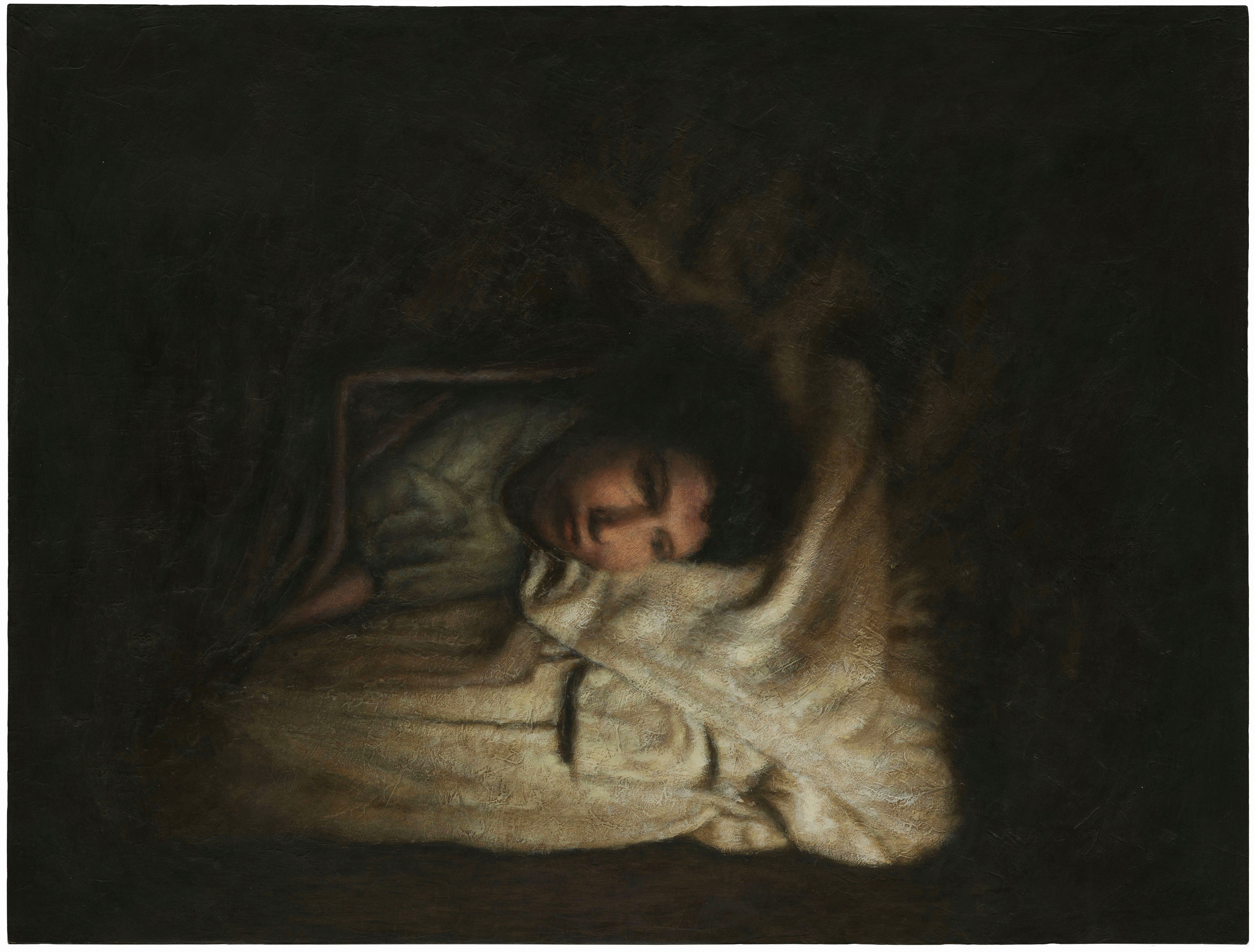
How Does One Give the Viewer Agency?
As specific as the protagonist of these paintings is (for me), my hope is that somehow the viewer can engage with the paintings in a way that is personally meaningful. In that regard I am thinking of having a catalogue accompanying the “Re. Rainbow Girl” exhibition, with texts about each of the paintings, written as if the writer is engaging with the images inquisitively, even speculatively (in contrast to the conventional all-informed expert): written, as such, in a way that might inspire the viewer’s / reader’s sense of interpretive agency. With that in mind, I asked the Portuguese writer Ana Rosa Gonçalves to write about the painting “Coroação” as if she knew nothing about it other than the title, the image, and the artist I was referencing (Domingos Antonio de Sequeira). Here is the marvelous text she wrote:

Conclusion
When I make a painting I am wondering “How do I make this painting?” That is, painting for me is not based in a formula. It is based in deep engagement with this subject, in a deep engagement with this material, with a persistent search to discover what this painting might be.
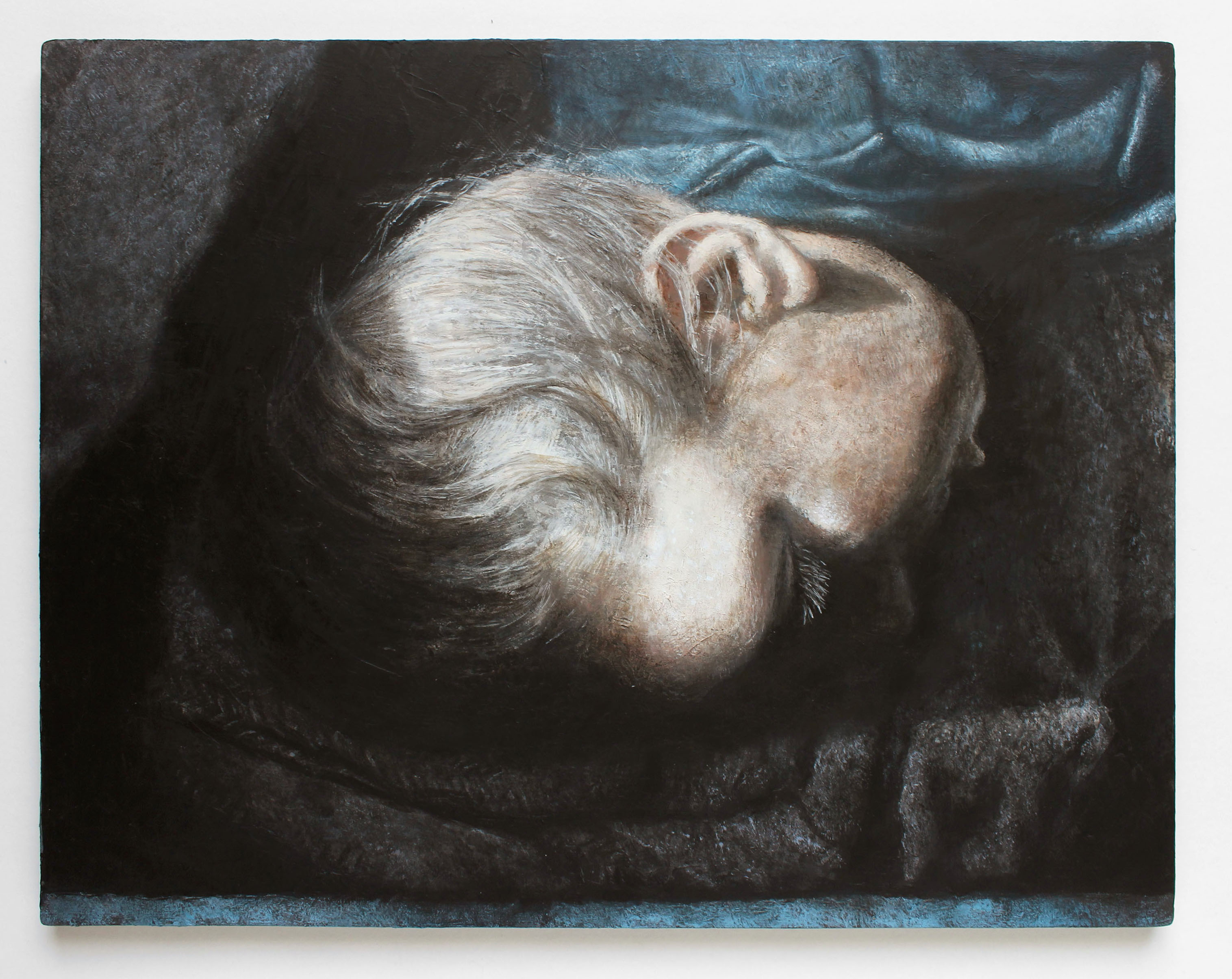
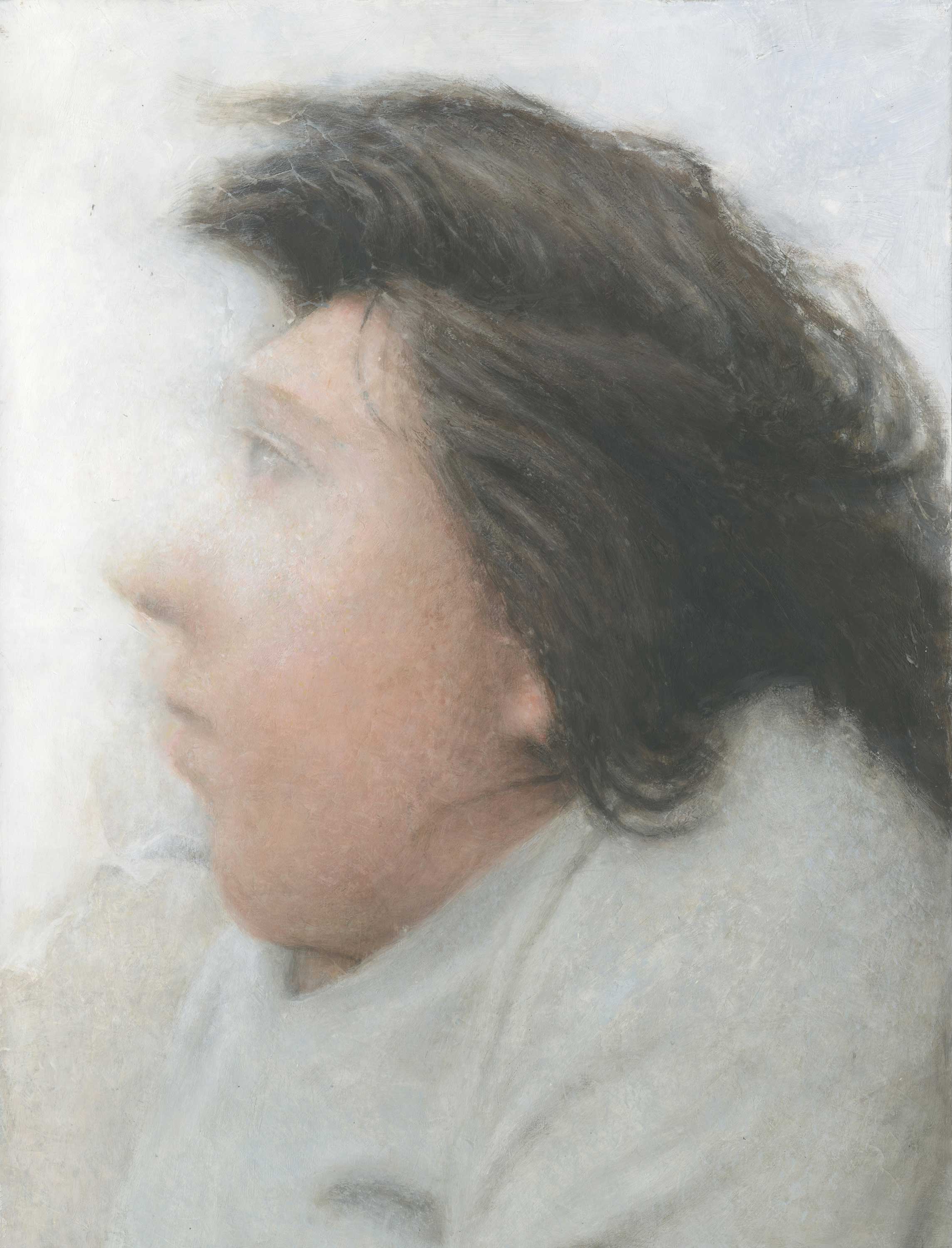
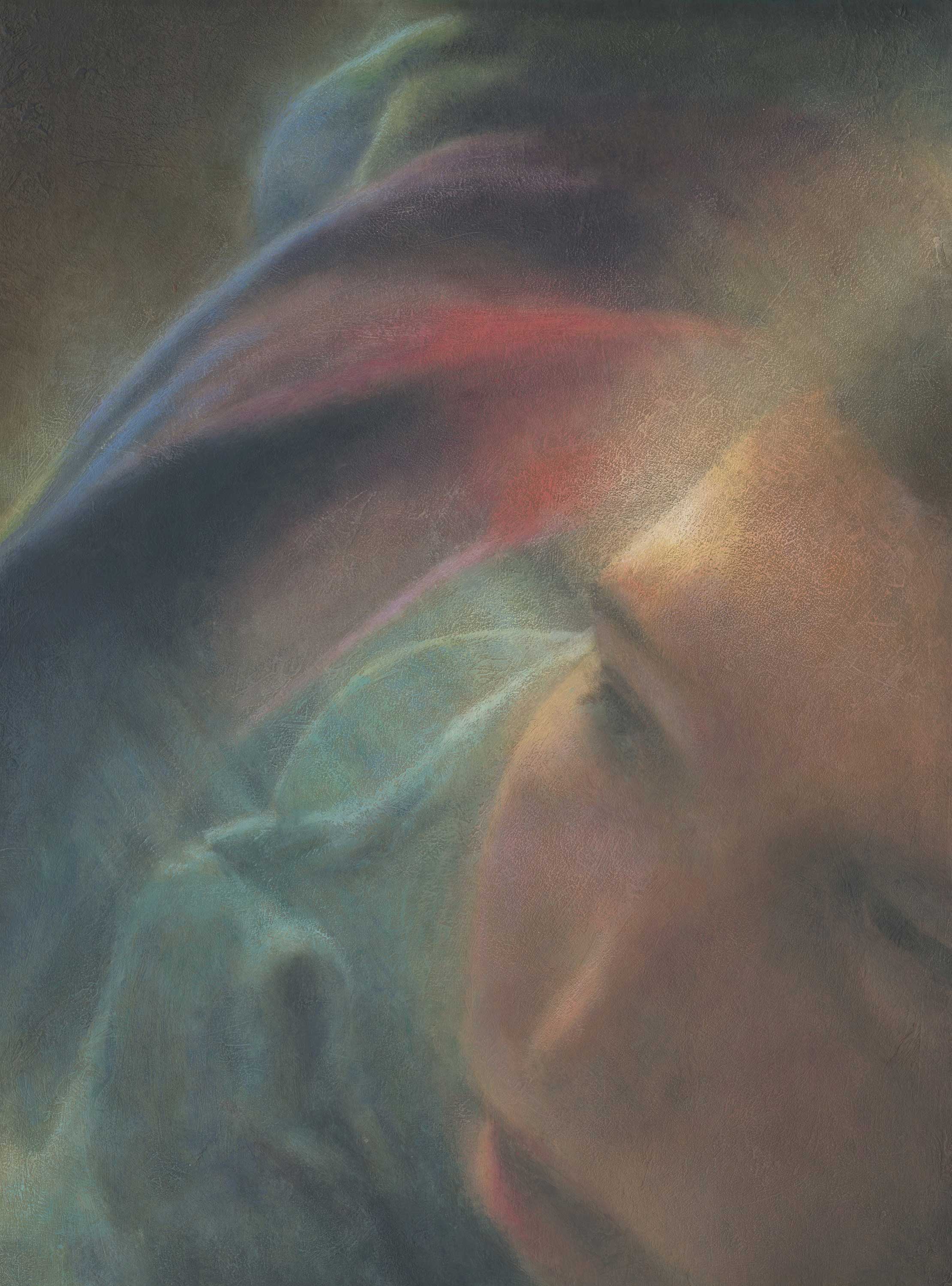
ABOUT THE ARTIST
Chicago-based artist, curator, musician, and teacher Tim Lowly was born in Hendersonville, North Carolina, in 1958. As the son of medical missionaries (his father was a hospital administrator), he spent most of his youth in South Korea. He attended Calvin College and received a BFA degree in 1981. In 1981 he married Sherrie Rubingh. Their daughter Temma was born in 1985. Since 1994, Tim has been affiliated with North Park University in Chicago as gallery director, professor, and artist-in-residence. Tim Lowly is represented by Koplin Del Rio Gallery, Seattle.
Browse RealismToday.com for more portraits and figurative art.


